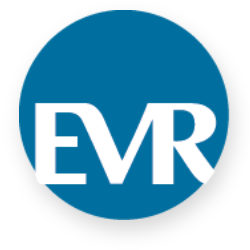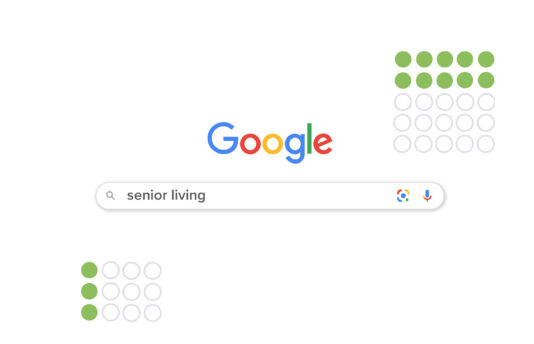Management Consultant Peter Drucker is credited with saying, “You can’t improve what you don’t measure.” While that quote came long before digital marketing exploded, it is a maxim that resonates today.
Digital strategies have had a significant impact on the marketing landscape in recent years. But to use those strategies to their full potential and position your senior living community for success, it is critical to recognize and leverage the enormous potential of data analytics.
For senior living community marketers, harnessing the power of data analytics is essential. It enables a deep understanding of your customers, facilitates personalized content, optimizes and evaluates campaigns, improves content strategies and ultimately helps you achieve measurable results and realize your goals.
The Benefits of Data Analytics
Data analytics offers endless possibilities, and the metrics provided are invaluable in measuring progress toward your senior living community’s marketing goals. It serves as a turbo-charge for your digital strategies by giving you the insights needed to enhance and improve the effectiveness of your marketing campaigns.
The benefits of data analytics for senior living communities include:
- No guesswork in decision-making: People often make decisions based on feelings or limited anecdotal experiences, which can be subjective. Actual data provides objective information to help you make better decisions and improve campaign results.
- Maximized return on marketing costs: With solid data, you can better plan campaigns and waste less money on ineffective targeting and strategy. That leads to more effective budgeting and higher revenue.
- Personalized customer journeys: Once you understand your target audience, you can create personalized content and develop campaigns that resonate with potential residents and their families, providing a more engaging experience.
- Improved and enhanced campaigns: By tracking and analyzing key performance indicators, including click-through rates, conversion rates and cost per acquisition, you can refine your advertising strategies for maximum effectiveness. You may think your campaigns are performing, but you can’t know without using data to connect strategy, tactics and performance.
Effective Data-Collecting Tools
The first step in successfully utilizing data analytics for your senior living community is to get your team on board and develop a data-driven marketing culture by centralizing data from different departments. This approach will help eliminate silos, allowing teams to work together more efficiently. To facilitate this data collection, sharing and utilization, here are some tools that can benefit your teams:
1. Customer relationship management (CRM) systems: A CRM system, such as SalesForce, Enquire or HubSpot, is the foundation of effective data-driven marketing. Integrating a CRM system with your marketing channels, including social media, website, email, PPC and SEO, will provide a holistic view of your marketing efforts and result in a more streamlined and efficient operation. In addition, a CRM system allows marketers to:
- Capture demographics, prospective resident preferences and interactions to create robust customer profiles and segment audiences to receive tailored messaging.
- Enable lead nurturing by automating follow-up processes, ensuring that all potential residents receive the right message in the right place at the right time.
To get the most out of your CRM system:
- Eliminate duplicate listings to ensure your contact list stays fresh.
- Keep customer status information current so prospective residents receive the proper messaging for their place in the customer journey.
- Purge opt-outs, bounces and inactive contacts.
2. Google Analytics: Google Analytics (GA) is a free but powerful tool for measuring and analyzing website performance. You will receive insights to help you understand how visitors interact with your community’s website and optimize the user experience. For example, with GA, you can implement tracking codes to gather data on the following:
- Website traffic
- Visitor behavior
- User demographics
- Traffic sources
- Most popular landing pages
- User flow
Additionally, GA’s event tracking feature enables you to monitor and measure visitor interactions on your site, providing information and insights into consumer behavior. User behavior and engagement data provide the number of actions for each event (quantitative data) and information on the users who engage in those events (qualitative data). Events you can track include:
- Form submissions
- Video views
- Page scrolling
- Button clicks
- Downloads
- Phone calls
3. Other data tools for in-depth analysis:
- Hotjar: Heat mapping tool that shows user interactions on website pages that can help uncover hidden opportunities you may not otherwise identify.
- Sprout Social: Social media analytics tool that helps you monitor engagement, sentiment and audience growth across different platforms.
- HubSpot: Helps you segment and target specific audiences to deliver personalized content.
Evaluate Data and Take Action
Collecting data is just the first step; evaluating and interpreting that data is crucial for enhancing performance. You must define the key performance indicators that will help you measure where you stand concerning your marketing goals and set benchmarks for measurement using historical data or industry standards. By analyzing data against benchmarks, you can identify what’s working and what isn’t. For instance, examining conversion rates can reveal which marketing channels drive the most qualified leads and help you to reallocate resources effectively.
Analytics helps you chart your progress toward your organizational goals, so you can make course, campaign and content corrections if needed. As digital marketing evolves, it becomes even more critical for senior living communities to leverage digital analytics to maintain a competitive edge.











